
17
HNUE JOURNAL OF SCIENCE
Educational Sciences 2024, Volume 69, Issue 5B, pp. 17-33
This paper is available online at http://hnuejs.edu.vn/es
DOI: 10.18173/2354-1075.2024-0132
THREE PHASES OF TECHNOLOGY
IN SINGAPORE MATHEMATICS EDUCATION
Tin Lam Toh
National Institute of Education, Nanyang Technological University, Singapore
Corresponding author: Tin Lam Toh, e-mail: tinlam.toh@nie.edu.sg
Received May 15, 2024. Revised October 2, 2024. Accepted December 27, 2024.
Abstract. This paper discusses the changes in classroom instructions due to technology over
the years in mathematics education, and how these changes have impacted mathematics
learning and teaching. The impact on learning can be seen over a few phases in Singapore:
The use of scientific and graphing calculators has allowed the focus on the developing of
higher-order thinking skills, while at the same time de-emphasizing routine computation.
With the introduction of various computer software such as spreadsheets, mathematics
teaching, and learning have moved towards the next level of emphasis on coding and
computational thinking. Technology can and has been harnessed by teachers to enhance
student learning. These will be discussed in detail in the talk, with particular reference to the
Singapore education context.
Keywords: Technology in education; scientific calculator; problem solving; online platforms;
flipped learning; generative AI.
1. Introduction
The emergence of technology into the education landscape has resulted in the evolution of the
mathematics curriculum development and its enactment in the mathematics classroom. Such changes
due to technology could manifest in many forms, for example, an additional tool to enhance learning
through engaging students in more concrete visualization of concepts, a shift of focus of learning from
low-order procedural knowledge to higher level conceptual understanding, or more radically, alter the
content of coverage in addition to pedagogical changes. In this paper, we discuss the changes through
the development of mathematics classrooms in the Singapore education system.
2. Content
2.1. Phases of technology
2.1.1. Phase one
Prior to the adoption of calculators in mathematics classrooms, slide rules have been used to
perform various mathematical operations such as the four basic operations, finding roots and
logarithms efficiently, among many other operations (e.g., [1], [2]). Much of the use of slide rules
pertains to helping students with tedious computations, although there are other creative possibilities
with such an instrument. For example, [2] demonstrated creative use of various mathematical formulae

Toh TL
18
using the slide rules. Still, this was not the norm but an exception of the day. The days of slide rules
were soon followed by the introduction of handheld calculators and scientific calculators.
Handheld calculators were first invented by two companies, namely Canon in Japan and Texas
in the United States, in 1970 [3]. The two companies have “successfully developed the world’s first
pocketable battery-driven electronic print-out calculator with full large-scale integrated circuitry.”
Scientific calculators were soon invented by Hewlett Packard in 1972. Scientific calculators were able
to calculate the values of transcendental functions such as trigonometry or logarithmic functions. The
latter scientific calculator soon found its place in the school system and subsequently had wide
adoption in many parts of the world, including Singapore.
With the widespread adoption of scientific calculators in the early 1980s in Singapore secondary
schools, slide rules went behind the scenes. Almost at the same time, scientific calculators were
allowed in the high-stake national examinations at the secondary level in GCE ‘O’ Level mathematics.
The objective of using calculators was to enable the students to focus on the mathematical concepts
rather than the mundane calculations (https://stationeryworld.com.sg/blog/tips-guidelines-on-using-
calculators-in-the-national-exam#:~:text=Scientific%20calculators%20were%20first%20
introduced,device%20as%20an%20examination%20aid).
There have been concerns about students’ use of calculators. In the study carried out by [4], the
main concerns among teachers on early use of calculators by children include the worry that children
could become over-reliant on the tool without understanding the mathematical processes; children
might not learn the fundamental facts; or there might be unequal opportunity of access to calculators
among students. There have been many studies on the impact of the use of calculators on students’
learning of mathematics. According to meta-analyses carried out by [5]-[7], students using scientific
calculators had a positive attitude towards the learning of mathematics. However, [6] shows that early
use of calculators (e.g., in Grade 4) hindered the development of basic computational skills among
average students. The prevalence of this stream of thought continued to sustain resistance to the use
of calculators for younger children. Scientific calculators were only allowed for secondary school
students up to 2008 when younger children in primary 5 and 6 (ages 11 and 12) were allowed to use
the scientific calculators in classrooms and during their assessment.
With the emergence of the Singapore mathematics curriculum framework in the early 1990s, the
role of the calculator could then be articulated to support the curriculum. Figure 1 shows the centrality
of mathematical problem solving in the Singapore mathematics curriculum from K-12. This
framework explicates the objective of mathematics education, which is flanked by five attributes,
represented by the five sides of the pentagon, contributing to mathematical problem solving [8].
Figure 1. The first Singapore mathematics curriculum framework that appears in 1990 [8]

Three phases of technology in Singapore mathematics education
19
Readers should note that the framework in Figure 1 remains largely unchanged, despite the
regular curriculum revision that has been carried out since then. One can easily make a comparison
between the framework when it was first introduced into the curriculum (Figure 1) and the most recent
mathematics curriculum framework as it stands today (Figure 2). The fundamental structure of the
framework, including the centrality of problem solving and its five attributes remains unchanged; only
the annotation to the five sides of the pentagon was modified.
Figure 2. The most recent Singapore mathematics curriculum framework [9]
With the centrality of problem solving in the curriculum, the role of the calculator can thus be
clearly articulated as playing a supporting role in facilitating the teaching and learning of mathematical
problem solving.
2.1.2. Calculators and problem solving
In addition to being a tool for checking manual computation and an enabler for computations to
be done by a machine, calculators can also play a critical role in mathematical problem solving.
Researchers and teachers have recognized the calculator as being able to reinforce recognition of
number patterns and handling computations involving larger numbers [4], [10], [11] and in [10], [11],
who advocated the importance of explicitly exposing students to problem solving strategies, they also
argued that the use of calculators reduced students’ computational errors, thereby enhancing their
success in problem solving. Researchers have also argued that the use of calculators is not necessarily
restricted to reducing computational errors during problem solving; its use among mathematics
students has resulted in them being more goal-driven, especially the high-scoring students, e.g., [12].
Efforts to enact problem solving in the Singapore mathematics classrooms at the secondary and
pre-university levels have been ongoing in various research projects in Singapore, e.g., [13]-[15]. Such
effort involves making problem solving heuristics and strategies the foreground of the courses, in other
words, making problem solving explicit. In such problem-solving courses, as illustrated by the set of
problems used for the course (http://math.nie.edu.sg/mprose in the Sample Problems section), the
researchers have permitted the use of calculators to look for patterns and make conjectures. In other
words, the role of the calculators took away tedious mundane computation from the students so that
they could focus on pattern recognition and conjecturing, among other heuristics.
Some researchers (e.g., [6]) asserted that early use of calculators might have undesirable effects
on students [16] and believed that students at the elementary grade levels should not be required to use

Toh TL
20
calculators, as they need to achieve proficiency in basic mathematical computations (e.g., perform the
four operations without the use of calculators) and gain an essential understanding of mathematical
concepts in order to move to higher levels. Calculators should only be allowed after they have achieved
mastery of fundamental mathematics so that the role of calculators is then to reduce tedious and
repetitive computation. This should occur at the upper elementary levels, where the role of calculators
is to facilitate the students to explore relationships [17], that is, part of mathematical problem solving.
Calculators were permitted to be used at the primary five-level (students of age 11) in 2008 and
at the primary six level (students of age 12) in 2009 in Singapore schools. This also resulted in
calculators being permitted to be used at the national level examinations in one part of the paper, while
the other part of the paper still prohibits the use of calculators in order to check students’ competency
with manual calculation. This new move was a reflection of the recognition of the power of the
calculator while retaining the emphasis on building a strong foundation in students’ computational
skills.
Singapore teachers have ridden on the affordance provided by calculators to engage their students
in mathematical problem solving at the primary school level. We shall illustrate with one example of
such a task crafted for primary six students. Consider the following problem which was originally
introduced for a problem solving course for lower secondary level (Leong et al., 2013)
Calculate the value of 𝟏
𝟏×𝟐+𝟏
𝟐×𝟑+𝟏
𝟑×𝟒+ ⋯ + 𝟏
𝟗𝟗×𝟏𝟎𝟎.
The formal solution to this question involves the use of summation of series using partial
fractions, an advanced mathematical content that is not usually accessible to primary school students.
With the use of a simple handheld or scientific calculator, the objective of this question has been
converted to a task that reinforces the use of problem-solving heuristics of looking for patterns and
making conjectures. A problem-specific scaffold that guides students towards developing problem-
solving heuristics has been developed for this question appears below (Figure 3).
Figure 3. A scaffold for solving a problem on the summation of a series

Three phases of technology in Singapore mathematics education
21
through problem-solving with the aid of a calculator
In the above task, the use of calculators offloads the tedious calculation (including summation of
fractions consisting of non-simplified terms) from the students. Note that calculation involving the
addition of fractions containing the product of terms in their denominators could pose a challenge for
most primary school students. This offloading of tedious calculations enables the students to focus on
the prompts to look for patterns and eventually make conjectures for the last case involving a very
large number of terms.
2.1.2. Graphing calculators at the pre-university level
The graphing calculator was permitted by the Singapore Ministry of Education at the pre-
university level, including its use as a pedagogical tool and in the final examination. The rationale of
introducing a graphing calculator at the pre-university level was also analogous to that of allowing the
use of the scientific calculator at the primary and secondary levels, in that it offloads students’
repetitive plotting of graphs so as to switch the students’ focus on the properties of the graphs of
functions. Note that the graphing calculator was only introduced at the pre-university level so that
students could have the opportunity to build up their competency in curve sketching at the secondary
level before they start to use graphing calculators. However, it was still emphasized in the syllabus
document that students need to be able to perform essential work rather than reading off answers from
a graphing calculator (GC), although making effective use of such a tool is expected of students:
Where unsupported answers from GC are not allowed, candidates are required to present the
mathematical steps using mathematical notations and not calculator commands [18, p. 2].
With the introduction of a GC, opportunities to explore various mathematical concepts involving
graphs of functions also increased. This led to the feasibility of explaining advanced mathematical
concepts through graphical means. For instance, the opportunity to develop an alternative
understanding of the sophisticated concept of differentiability in calculus by linear localization, e.g., [19],
was made possible in addition to the traditional method of using the secant line approach. Through
local linearization, one is able to identify points on the graph of a function that is differentiable or
otherwise: if one zoomzoom in sufficiently, the graph appears as a “linear function” as a function.
This made it feasible to explain to high school students the notion of differentiability without delving
into the formal definition of differentiation and differentiability.
Exploratory activities by means of a GC or other similar graphing tools have made it possible for
students to explore graphs that are otherwise difficult to plot manually. Two examples of graphs which
are usually not introduced without technology, but became a rich source of exploration due to graphing
tools are shown in Figures 4 and 5.


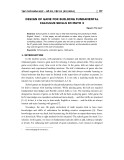

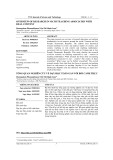

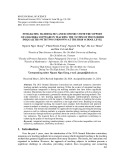
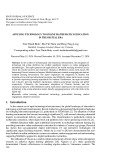

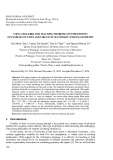
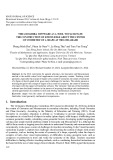

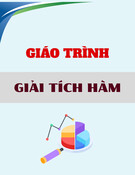
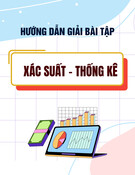
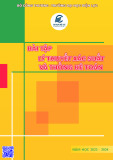
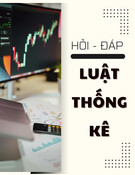
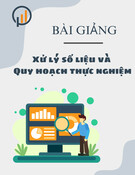
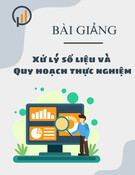
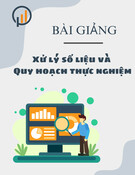
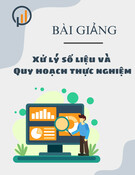
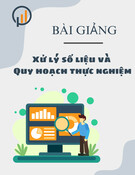
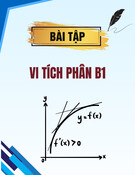
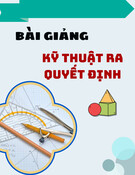
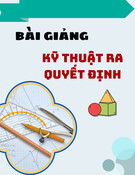
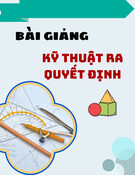
![Quyển ghi Xác suất và Thống kê [chuẩn nhất]](https://cdn.tailieu.vn/images/document/thumbnail/2025/20251030/anh26012006/135x160/68811762164229.jpg)
